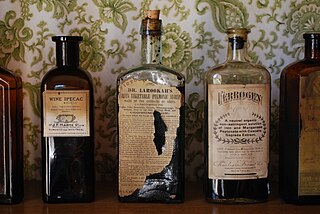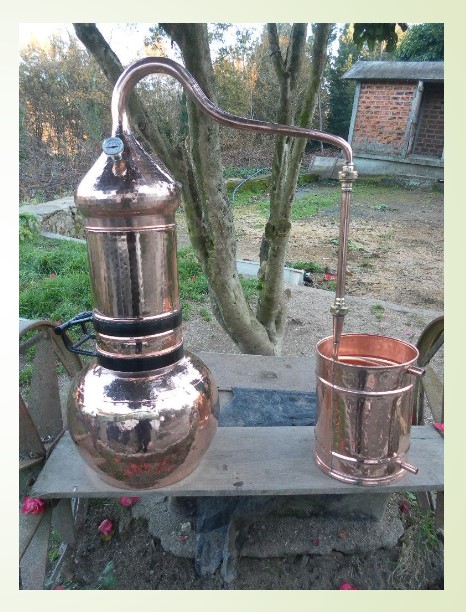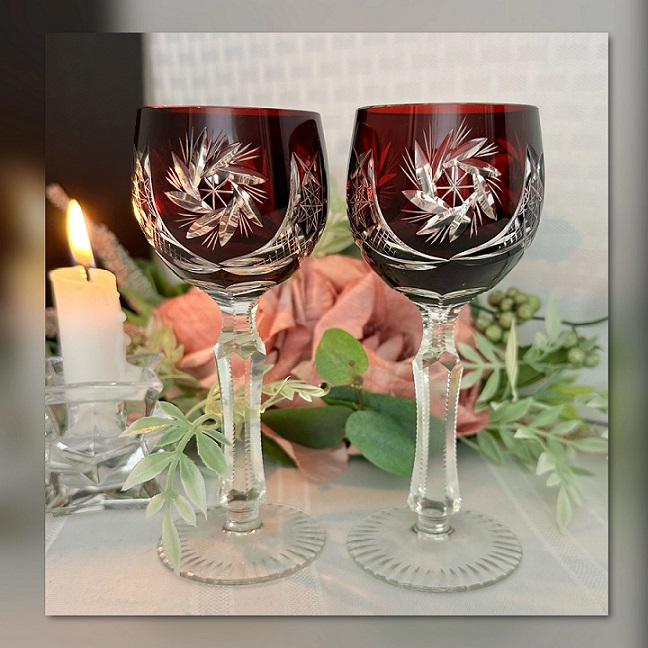
The above image of vintage pharmacy bottles for medicinal cordials is courtesy of Wikipedia.
Today’s post is one of a series, Health Friday, related to Big Pharma, vaccines, general health, and associated topics. However, the discussion in these posts is not limited to what is presented: it is an Open Thread.
To begin, there are Important Wolf Moon Notifications, with a couple of extra items:
Free speech is practiced here. “Use it or lose it.”
The following are alternate Q Tree sites for certain circumstances:
The U Tree is for “argue it out” interactions.
The Rescue Thread at the U Tree: click on the “Featured” article.
The Third Site, in case the above two are not accessible.
Civil discussion is practiced here. The excellent and timely Rules of our late, good Wheatie prevail:
One: No food fights.
Two: No running with scissors.
Three: If you bring snacks, bring enough for everyone.
Please follow the added guidelines from our good Wolf Moon. Please do not give the modern-day version of Cato the Elder the opportunity to show “enmity” to the board.
The extra items:
What Yours Truly presents in this series, as in her previous blog posts for this board, is not medical advice — they are opinions and hypotheses based on her over 4 1/2 years (and continuing) of reading about, researching about, and writing about “all things COVID”, Big Pharma, and other health topics. Readers are encouraged to consult a healthcare practitioner regarding health concerns or conditions.
Today’s offering for Health Friday is one of a “slightly different path” — it regards Medicinal Cordials. It is a fascinating history that traces at least as far back to Italy during the 15th and 16th Centuries (the Renaissance period.) At that time, medicinal cordials were created and sold by apothecaries (what would now be called Pharmacists.) The craft spread quickly among western European countries (France, Spain, Germany, and England.) Medicinal cordials were originally used to “release” diseases from the body of the patient; to assist in the “renewal” of the diseased body, mind, and spirit; and, to “renew the natural heat” of the body. There were medicinal cordials that had flecks of gold. crushed pearls, or crushed coral added to them, as these items were thought to “assist” the mechanism of the drink. Medicinal cordials eventually “evolved” along two paths: One, into what became “patent medicines”; and, Two, into what are now called “digestifs” and non-medicinal cordials or liqueurs. A “separate” path of development produced a kind of “medicinal beer.” Some medicinal cordials had no alcoholic content at all; others had varying amounts of alcohol content. Some medicinal cordials were made from flowers and spices; others contained herbs and wood derivatives; still others were made of only from herbs and spices. They were (and, along with their modern-day versions of liqueurs, still are), distinct from “fortified wines”, such as Sherry or Vermouth; and, from certain other types of “alcohol + derived ingredient drinks”, such as Ouzo. There are “modern-day” types of “medicinal cordials” available: for example, https://texasmedicinals.com/, which produces and sells various cordials tinctures and elixirs made of flowers, herbs, and spices.
Certain orders of Roman Catholic monks were also involved in the making and providing of medicinal cordials. The famous cross between a medicinal cordial and a “digestif”, D.O.M. Benedictine, was first created by the Benedictine monks at the Abbey of Fecamp, France, in 1510. A French merchant, Alexandre Le Grand, found the original recipe in 1863 (it had been considered lost), and eventually recreated it as the drink sold today. Please see: https://wineanthology.com/1943-benedictine-dom-liqueur. The current product is no longer strictly a “medicinal cordial”, but is a liqueur. The exact ingredients are a secret, but the mixture is believed to contain hyssop, juniper, aloe, and cinnamon, among others. Please see: www.catalystplanet.com/travel-and-social-action-stories/2022/04/12/5-alcoholic-drinks-made-by-european-monks.
Then, there is Chartreuse, first created by the Carthusian monks of the Grande Chartreuse Monastery near Grenoble, France. A blend of distilled alcohol and 130 other ingredients (herbs and flowers among them), it is also no longer strictly a “medicinal cordial”, but a liqueur. (However, along with D.O.M. Benedictine, Chartreuse is still considered to have medicinal properties.) Chartreuse is available in “yellow” or “green” hues, which are different in their alcohol content. Please see: https://en.wikipedia.org/wiki/Chartreuse_(liqueur). There is also a version available, Chartreuse Vegetal, that is 138-Proof (www.luekensliquors.com/), search “Chartreuse Vegetal.” There are some websites that claim to have the ingredients of the recipe for Chartreuse; other websites have instructions on how to create a kind of “clone” of the recipe.
The Christian Brothers (originally, the De La Salle Christian Brothers), another Roman Catholic religious order of monks, began to grow and produce wines in the Martinez area of California around 1880. They expanded to include vineyards and wineries in the Napa Valley. They now produce altar wines for use in the Mass, and certain types of Brandy. They do not produce medicinal cordials or liqueurs. Please see: www.montlasallealtarwines.com/forms/MLS_History.pdf.
Drambuie, a whisky-based liqueur made in Scotland, is thought to have been created by “Bonnie Prince Charlie” (Prince Charles Edward Stewart) in 1745. A blend of malt whisky, honey, herbs, and spices, it was used as a medicinal cordial. The modern-day product is a Scottish whisky-based liqueur. Please see: www.thespruceeats.com/drambuie-liqeueur-profile-and-cocktals-760270.
Among other types of liqueurs, there are ones made of mostly flower or flower-herb bases. Some of these were originally used as “medicinal cordials.” Modern-day examples are: Vespetro (Italy); Becherovka Original (Czech Republic); St.-Germain Elder Flower Liqueur (France); and, American Elderberry Cordial (Missouri; no alcohol.)
And, yes, there is a kind of “medicinal beer” — Trappist beer, made by Trappist (Cistercian) monks. There are only a handful of Trappist monasteries that brew authentic Trappist beer or ale; they are governed by the International Trappist Association (ITA.) The recipe, a secret known only to a few of the monks, is thought to include herbs and spices. There is a “light” and a “dark” version of Trappist beer or ale (https://beerconnoisseur.com/articles/almighty-trappist-ale.) It is thought that the brew contains certain spices, such as cinnamon and coriander, in the mixture. For persons interested in making a “home-brew Trappist-style version” of the product, please see: https://beersmith.com/blog/2010/09/01/trappist-dubbel-and-tripel-recipes/.
However, there was a “darker side” to medicinal cordials — those that were used to quiet restless or ill babies and children. These were actually “patent medicines”; two such products were “Godfrey’s Cordial” and “Dalby’s Carminative.” They were used in England and the United States during the 18th and early 19th Centuries. The main ingredient of each of these “cordials” was opium — “Godfrey’s Cordial” had one ounce of opium for each two ounces of the product; “Dalby’s Carminative” contained 1/4 ounce of opium for each two ounces of the product. The number of babies and children who died from taking these products is not known. In addition, there was the original recipe for “Creme de Noyaux”, from Yvelines, France. This “cordial”, made from apricot or peach kernels, or cherry pits, could accumulate trace amounts of hydrogen cyanide (a poison.) The longer this “cordial” was kept in storage, the greater the potential for the hydrogen cyanide to accumulate and collect at the top of the bottle — an unsuspecting imbiber could be badly poisoned upon taking a glass of it. The recipe was re-formulated a few years ago by the Tempus Fugit company to remove all traces of the poison. (This formulation would appear to be the “safest” for Creme de Noyaux.)
There are sources online that can assist interested persons who wish to create cordials or liqueurs at home. One source is here: https://theherbalacademy.com/. Another source (which also has a history of medicinal cordials) is here: https://traditionalroots.org/wp-content/uploads/2015/05/Herbal-Cordials-and-Liqueurs-2_16.pdf, by Glen Nagel, ND (Naturopathic Doctor.) Here is an image of an Alembic Still, used to create home-made cordials or liqueurs (courtesy of Glen Nagel):

Interested persons should note that taking modern-day “versions” of medicinal cordials or liqueurs does not replace consulting a healthcare practitioner regarding health concerns; also, they should also investigate ingredients in home-made “medicinal cordials or liqueurs” to make sure none of them would interact with any prescription drugs, OTC drugs, and/or other herbals that the person is already taking. For example, the Gentian used in this home-made herbal “cordial” can interact with prescription drugs for high blood pressure, as Gentian is may lower blood pressure (www.webmd.com/vitamins/ai/ingredientmono-716/gentian, click on “Interactions.”)
Cordials glasses are usually small and hold no more than 2 to 4 ounces of the cordial. They are used to serve the drink at room temperature or chilled, and usually without other items mixed in. Some types of cordials glasses are also used to serve liqueurs. An example of vintage cranberry red cordials glasses is below, courtesy of https://rustedlove.com/:

Due to the varying alcohol content of cordials or liqueurs, and to their unique flavors, the modern-day versions of these products are often added to mixed drinks.
Ad Salutem Tuam!
Good Energy, Peace, Respect: PAVACA